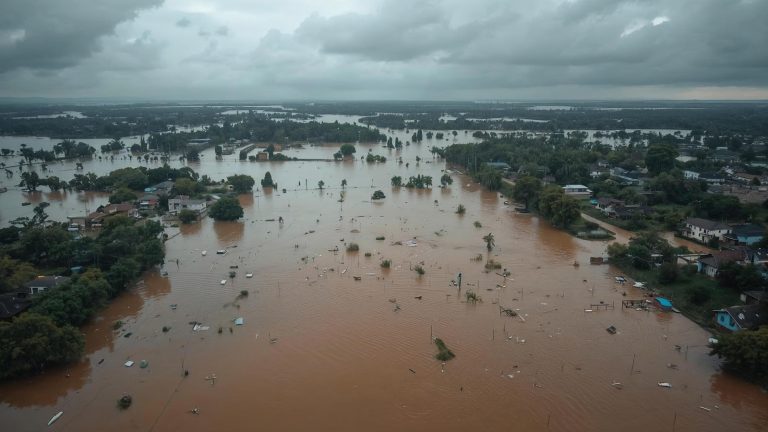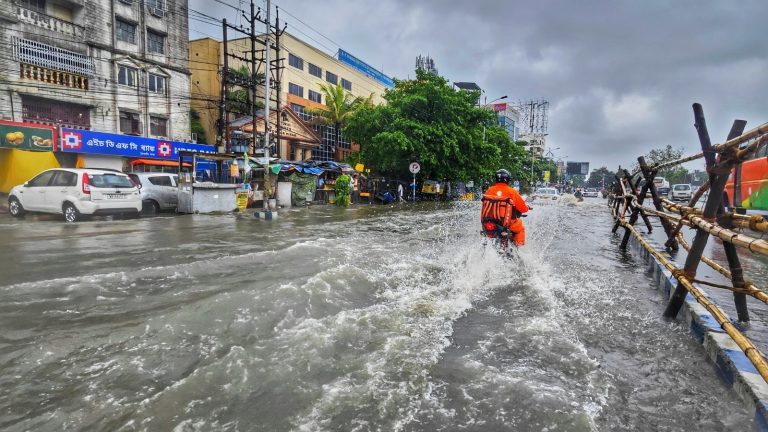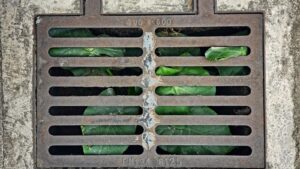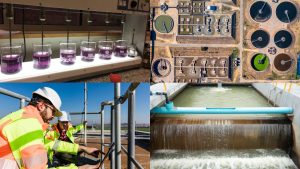Every rain is followed by millions of gallons of water flowing down the rooftops, roads, and parking lots, blending with litter, oil, fertilisers, sediment, and all the harsh chemicals along the way. This runoff is what we call ‘stormwater’. The major challenge with stormwater is that it streams down into lakes, rivers, and oceans without going through proper treatment. On the one hand, it drags down the water quality at the bottom and harms aquatic ecosystems. If the protection of the environment is the expected outcome, everything should start with the first steps, which are preventing this pollution. In today’s world, stormwater management has become a growing requirement in many regions.
Fortunately, the solutions for stormwater pollution prevention are not that difficult to implement. There are many practical steps, suitable for anyone, including industrial businesses, municipalities, homeowners, landscapers, or facility managers, that can be performed easily.
In this article, we look into the five practical tips for stormwater pollution prevention.
5 Practical Tips to Help with Stormwater Pollution Prevention

Prevent Pollutants at the Source
Simple actions like this can make a big difference:
- Must put a full stop to pouring paint, motor oil, or cleaning products into storm drains.
- Implement controlled disposal protocols for household-origin toxic substances, as there are designated collection sites.
- Clean up pet waste promptly and place it in sealed trash bins.
- When in need of maintaining vehicles or machinery, better to employ drip trays or absorbent mats.
Use Responsible Landscaping and Site Maintenance Practices
Here we talk about some habits the general public can adopt for stormwater-friendly landscaping:
- They can cover soil piles and sand stockpiles when preventing erosion.
- Initiate compost processes for grass clippings and leaves, avoiding the practice of sweeping them into the nearby street.
- When applying fertilisers and pesticides, they can try doing it sparingly and not applying them before heavy rain.
- It is a wise strategy to plant native vegetation that requires less water and fewer chemicals.
- Maintain buffer strips of plants or mulch along driveways and walkways to trap sediments.
Implement Stormwater-Friendly Infrastructure and Best Management Practices (BMPs)
It does not matter whether it is a commercial facility or a residential property; authorities are advised to integrate BMPs that suit their scale:
- They can opt for permeable pavements that support rainwater infiltration rather than runoff.
- It is a popular way to build rain gardens and bioswales as they pave the way for water to get filtered easily while it absorbs runoff using soil and vegetation.
- Implementing rain barrels to collect roof runoff for reuse in gardens is a common strategy for stormwater pollution prevention.
- If there are covered storage areas, it is the best way to prevent materials like salt or fertiliser from washing away.
- Municipalities can plan and execute routine sweeping of parking lots and walkways, which certainly prevents debris buildup.
Maintain and Inspect Regularly
It is always a wise approach to adopt a proactive maintenance plan:
- Keep the inspections of catch basins, storm drains, and gutters, quarterly or seasonally and schedule maintenance regularly.
- Removing debris, leaves, and trash is important when maintaining flow capacity.
- It is a vital factor to keep a watchful eye on leaks, oil stains, or spills near loading docks and parking areas.
- It is an advisable approach to substitute filter media, clean out sediment traps, and properly record maintenance activities.
Raise Awareness and Train Your Community
Ways to build awareness:
- It is a popular initiative to put labels near storm drains indicating ‘No Dumping—Drains to River’.
- If the authorities can hold short training sessions for employees or maintenance staff to give a good understanding of spill response and proper disposal.
- Organising community clean-up events before the rainy season.
- It is a wise approach if the authorities can share reminders in neighbourhood bulletins or workplace newsletters.
How to Get Started

You can always begin with what is practical:
- The first significant step is identifying where runoff leaves a certain property.
- You can start by stopping visible pollutants at the source.
- However, keeping your outdoor areas clean and covered is a fundamental step in this case.
- It is better to introduce one new BMP, such as a rain barrel or permeable walkway.
- Setting up regular cleaning and inspection sessions is vital.
- Over time, these habits you practice today are the ones that will compound into significant environmental benefits tomorrow, such as healthier ecosystems, cleaner creeks, and lower municipal treatment costs, and most importantly, reduced flooding.
Start a Robust Stormwater Pollution Prevention Strategy Today with Modern Tools

It is a vital fact that everybody needs to understand that stormwater cannot be avoided. The only way to control stormwater is by strategically implementing pollution prevention mechanisms. This is where the AI-powered Wastewater Asset Solution stands tall as the best approach to spot harmful pollution sources, inspect treatment protocols, identify areas with the most pollution levels, etc., with ease. Upon the execution of validated strategic measures, you can be certain that the stormwater is well-treated before seeping into the environment.







